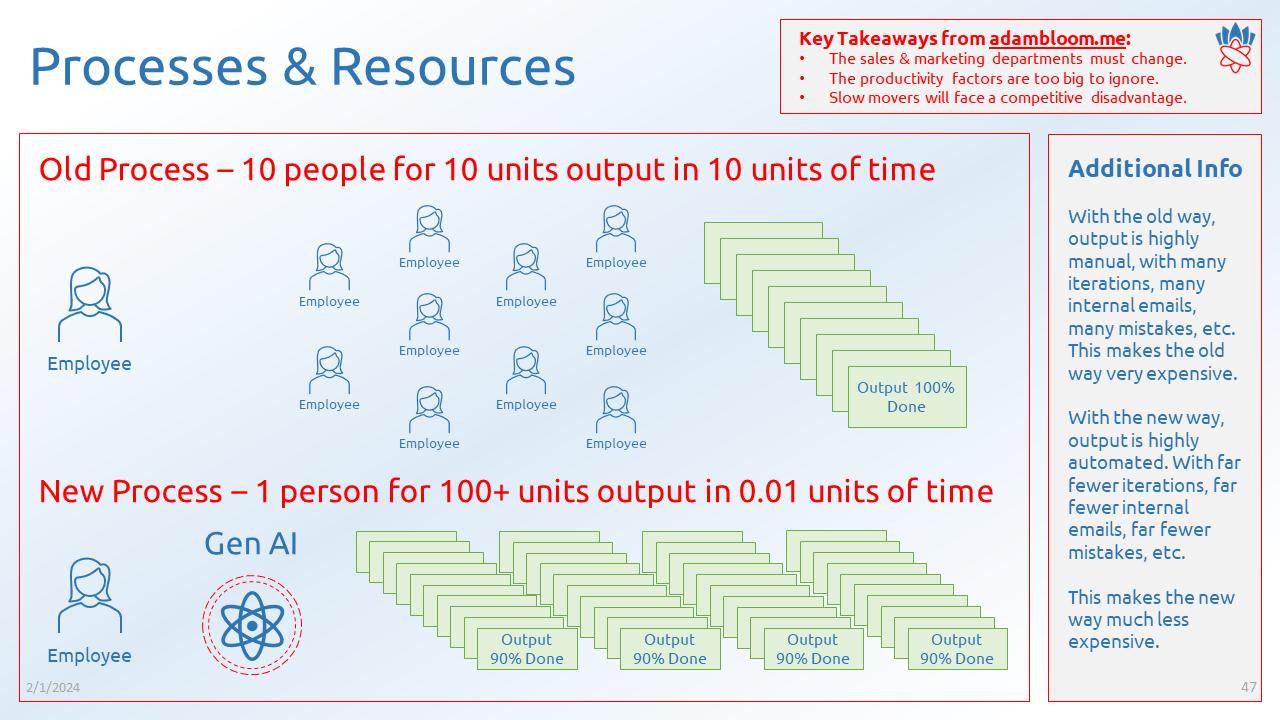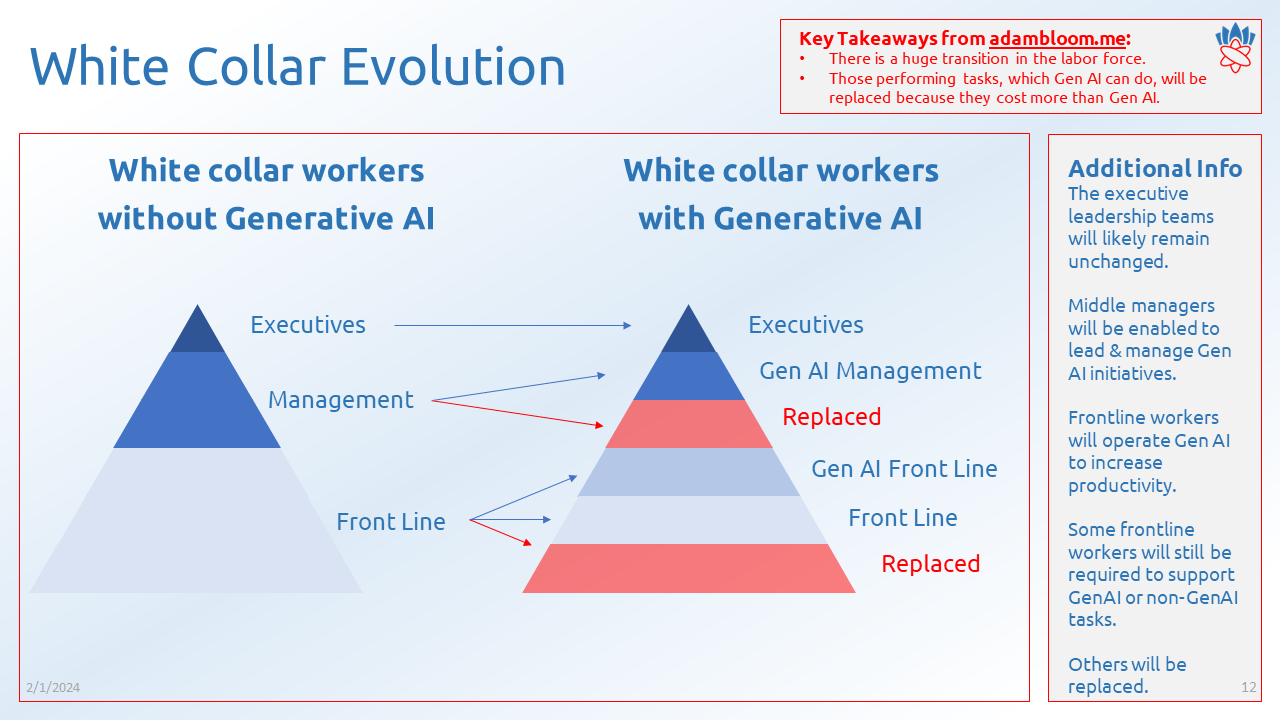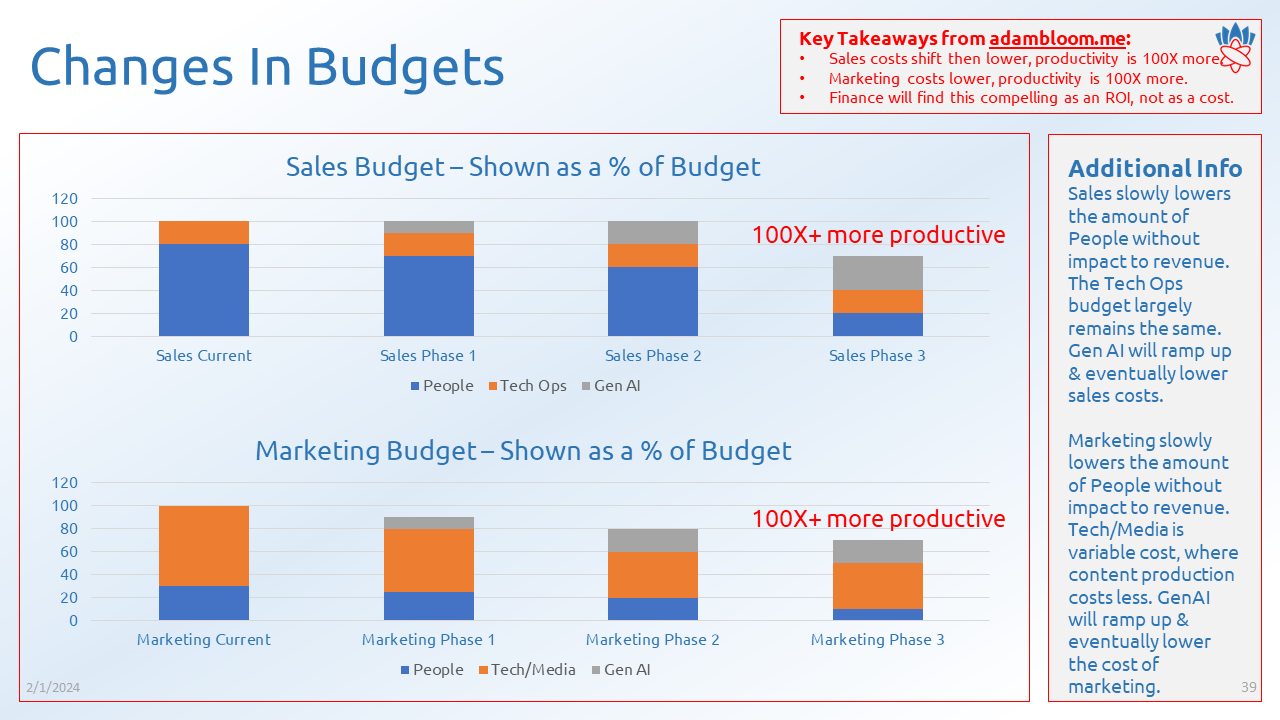Let’s face it: the marketing world is already complicated. Agile marketing isn’t easy to implement or continuously manage, and the promise of helping teams prioritize work — and say no to some things — remains elusive. But now, marketing processes are shifting even more rapidly, with generative AI emerging as the top catalyst.
How do you combine agile marketing and generative AI? What will this powerful duo do for you? This article explores the concept of “Agile + Generative” and its potential impact on companies and marketers’ careers in the coming decade.
While experts emphasize that agile marketing is more about prioritization and focus than faster and better execution, in my experience, the two go hand in hand. Generative AI is poised to accelerate priority work — especially in content management and SEO.
This article doesn’t delve into prioritization strategies. Instead, we’ll explore the metrics impact, effectiveness and efficiencies generative AI can bring to an agile marketing team. Buckle up as we navigate this new frontier in marketing innovation.

Dig deeper: How agile marketing teams can work with AI
What will ‘Agile + Generative AI’ achieve?
While every white-collar worker is concerned about career impact (and rightly so), the momentum is too great to ignore. 2024 has brought us into the “trough of disillusionment” for generative AI. There will eventually be a new level of maturity in the coming years, with many case studies to provide proof of outcomes. Some of these case studies already exist — while “how tos” are rampant:
- Nvidia: Cracking the Code: NVIDIA’s Marketing Strategy
- Amazon: Increasing Customer Return on Investment Using Generative AI on AWS
- Amazon: Driving Marketing Innovation Using Generative AI from AWS
- Microsoft: Elevating customer insights with generative AI
- Microsoft: Unleash the power of generative AI in your marketing strategies
- Google: Innovations in generative AI and marketing
- Google: How Google is Leveraging Generative AI for Sophisticated Ad Campaigns
- Anthropic: Claude AI: Transforming Marketing with Innovative Use Cases and Prompts
- Perplexity: Perplexity AI: The Game-Changer in Conversational AI and Web Search
- ChatGPT: 11 Use Cases of ChatGPT in Marketing for 2024
As these articles point out, marketing leaders (including agile teams) strongly need to pivot quickly and incorporate generative AI skills, processes and tools.

Improvements to agile marketing
If we look in the rearview mirror, companies with process excellence and advanced use of technology always perform better. This is according to tons of management consultant research over the past 20+ years. Generative AI will do the same — especially regarding research and content — which costs marketers a lot of time and money. It also interacts with a ton of prospects and customers.
Executives, leaders and doers should ask themselves a few key questions: What happens when your competitors can produce content with a threefold productivity improvement? What if the content and media you produce cost three times less? What if it is three times more targeted to the most important personas? Will this impact revenue? Will it help salespeople close more deals? What about competitive advantage and brand perception? What occurs when you combine Agile marketing with generative AI? Does one plus one equal three? And doesn’t this also affect SEO and conversion rates?
Generative AI can “supercharge” (someone call the buzzword police) agile marketing by providing:
- Faster delivery and time to market.
- More iterative adaptation.
- Improved content quality.
- Better conversion rates across personas, segments, channels, industries and products.
- Increased revenue with lower costs.

The key metrics ‘Agile + Generative AI’ can impact
This generative AI evolution makes marketing content development more productive. It also lowers customer acquisition costs (CAC), which is every CMO’s golden ticket to “doing more with less.” The savings can be reallocated to other areas if content is 30% of your marketing budget. Your content quality will go up — if you do it right.
The top issue remains: Can we trust generative AI to provide citations and quote sources with journalistic standards and credibility? Not completely.
To support a lower CAC, conversion rates can go up across every channel, all based on hyper-personalization. Better marketing productivity should lead to more revenue and growth, right? If not, are you doing things the right way? Real-world examples have shown that marketing productivity can improve by three times for many processes and even 10 times for others.
Again, these aren’t hand-waving claims — as of 2024 — the market has already proven them. It just isn’t yet widely known and mainstream. Generative AI is still very new. Only the innovators are making it happen and perhaps some early adopters.
Innovation takes more resources than basic operational improvements. But, a “wait and see” attitude means you will start from behind. The laggards will have a problem, like when Netflix crushed Blockbuster with “normal” AI.

Dig deeper: How marketers can go beyond random acts of AI and why they should
Prompt design and micro language models: The key to ‘Agile + Generative AI’
A baseline understanding of generative AI is needed, especially around prompt design and micro language models. Conceptually, a micro language model resembles attachments you upload with your prompt.
Prompt design vs. prompt engineering
Over the past two years, prompt engineering has become “all the rage” for engineers and coders. The media world made sure everyone knew it was the most in-demand job. What exactly is it?
To use an analogy, website design differs from website engineering with JavaScript, HTML and CSS. In the same vein, prompt design is different from prompt engineering. In either case, design and engineering (or coding) can overlap. Prompt engineers will write “code” in Python and English to solve problems. However, businesspeople “write prompts in English” and give requirements to engineers when code is needed.
Either way, prompt design should be treated like code because words matter in a prompt. Even a small change to a prompt (written in English) can create drastically different outputs. This is especially true if you want to reuse prompts for different circumstances while avoiding engineering costs.
Writing a simple prompt design vs. a complex one
Typing in a few questions or sentences is a very basic prompt. Anyone can do it. However, a prompt can be three, five or even 10 pages of written words — or more.
Again, this does not have to be created or implemented by engineers. “Normal humans” can learn to write complex prompts. They just need a technical mindset alongside an ability to write well. With simple prompts, there are strong productivity boosts. We’ve all played with ChatGPT.
However, more sophisticated prompts can significantly enhance the outputs. For complex prompts, version control and file management become crucial because the wording functions like code. Additionally, reusing prompts is essential for productivity; you don’t want to write a new prompt from scratch each time you need to generate an output.
What is a micro language model?
Stick this into a prompt to find out:
“You are a world-class CMO and leader of agile marketing at an award-winning SaaS software company. You are an expert in attaining the results of agile marketing and an expert in generative AI prompt design. You know how to lead agile marketing teams to accomplish goals in these key areas: faster delivery, improved quality, better adaptation, improved communication, increased revenue and faster time to market. Your goal is to answer questions about generative AI and agile marketing:
1. What is a micro language model?
2. How is a micro language model similar to attachments you submit into a prompt?
3. How are prompt content attachments used in content marketing?
4. What are the top 10 considerations when using attachments for content production?
5. How can attachments help improve content quality and speed?
6. How can well-designed prompts and attachments impact the key marketing metrics which a CMO cares about?”
That’s the end of the prompt
The bottom line is: Use attachments. While some of the output isn’t useful, a lot of it is. The results will get you thinking! For the agile mindset, start with micro language models (high-quality attachments) now.
Dig deeper: 5 ways to evolve agile marketing for real business results
The post Transforming agile marketing with generative AI appeared first on MarTech.











